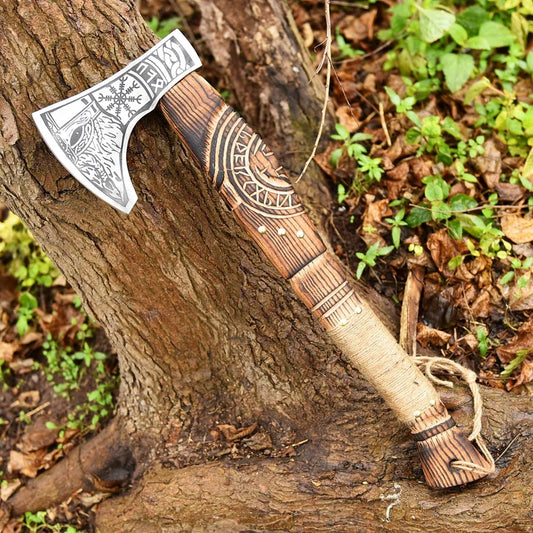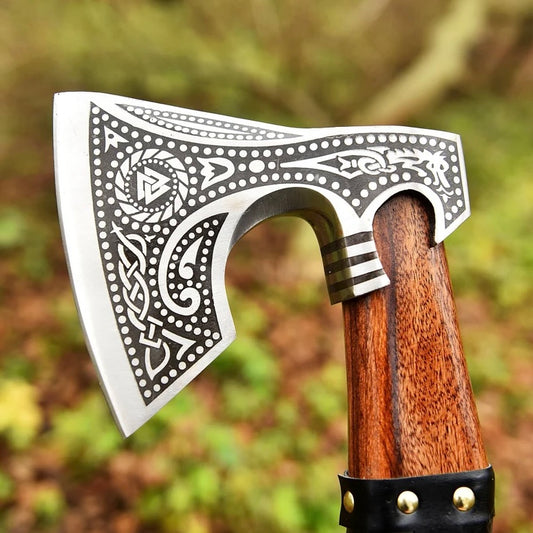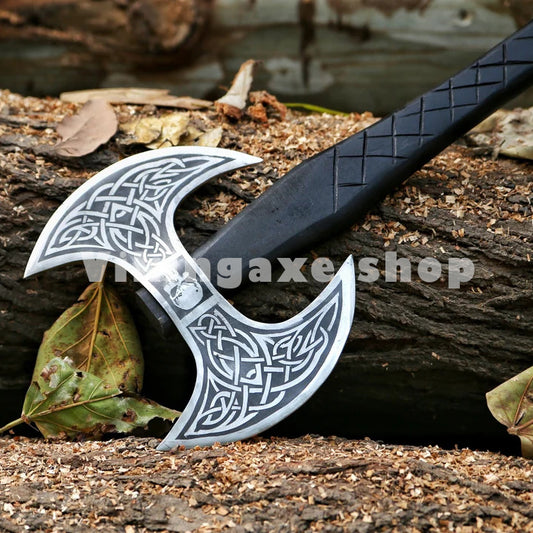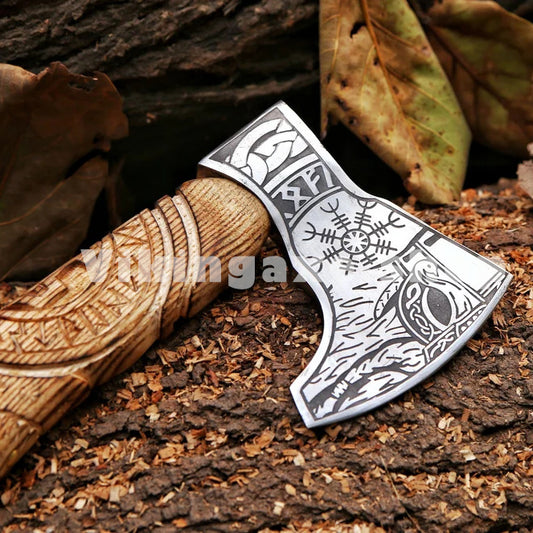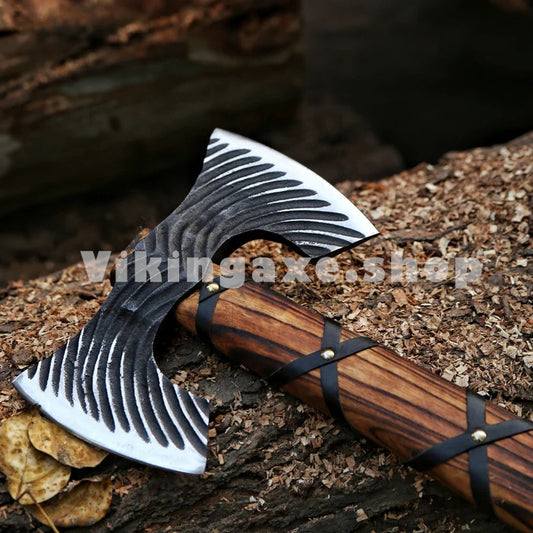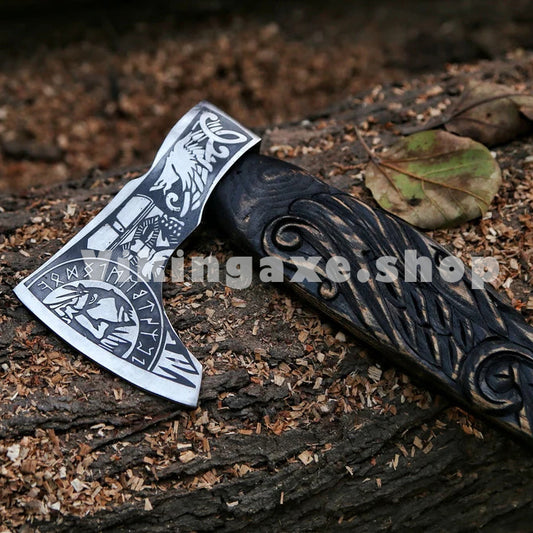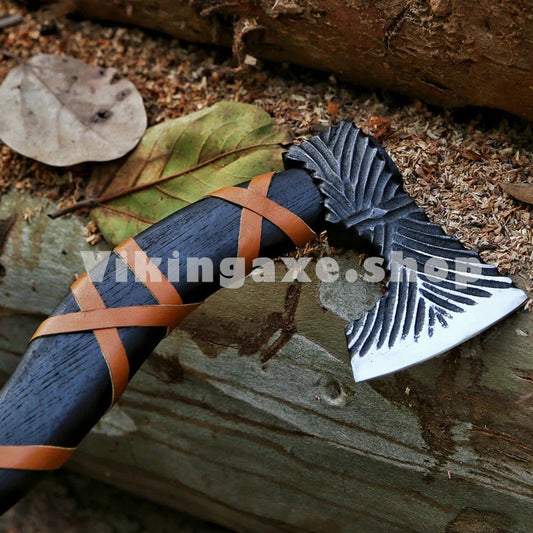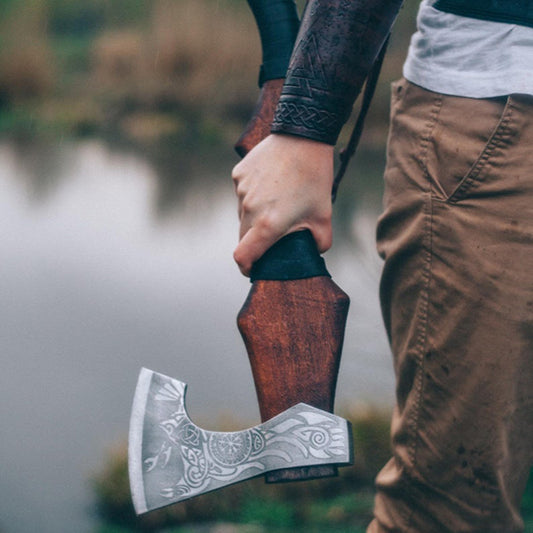
All About Vikings Axes
Are you looking for an axe that you see in historical shows and movies where Vikings are pictured clasping larger or minor axes, giving a threatening and vicious look?
If yes, then you are at the right place where you will find a variety of different types of Viking axes with various sizes and shapes and you can choose according to your own choice or need.
Indeed axes were a crucial part of a Viking’s life. Not just as spears, but as appliance, they simply couldn’t do without in their daily lives.
What Is A Viking Axe?
A Viking Axe is a hand tool that has a variety of uses both in the battleground and at home. Back in that era, swords were quite expensive and only wealthy warriors could afford them.
From the historical point of view, An axe was something every Viking needed to occupy and know how to utilize in their forested, snowy countries. Because of this, axes became the most widespread weapons used during wars. Axes as weapons of war started simply as the available equipment carried along on Viking invading excursions.
Over time the design, pattern, and structure of the axes changed. Scandinavian people mastered the art of ax making. In the start, the head was made with stone but gradually it was replaced by iron and steel.
Material Used In The construction of Viking Axes
They have been found in the highly equipped warrior graves of the Viking Age, as well as in modest graves, in which the dead had little to accompany them on their last journey. Apart from iron and bronze, the Saxons and Vikings made use of other metals, mainly for jewelry. The most commonly used metals were silver, pewter, and gold. Silver was a popular metal for jewelry such as brooches, rings, strap ends, buckles, mounts for drinking horns, and, of course, coinage
The handle of late Viking axes was mostly made up of wood, Birch was a type of wooden material that Vikings used as axe handles in that age and also in the medieval era.
Construction Points To Keep In Mind While Selecting A Viking Axe
Axe heads commonly had a wedge-shaped cross-section. The cross-section of the head near the edge was however often a diamond shape, providing greater stability and strength for the weight of iron.
Some axe heads had a very thin, gorgeous, and elegant cross-section. Although these axes were too thin and soft to be used for splitting wood, they are excellent for splitting skulls.
With thinner blades, the blade is crumpled around what eventually becomes the eye. A steel bit is then welded onto the iron head for the edge. The wrap was symmetrical in some cases, while in others it was asymmetrical, with the weld positioned slightly forward of the eye.
Features Of Viking Axes
- The axe head is loosely established on the widely used bearded axe of the Viking age. It is crafted with both conventional methods of forging and modern metalworking techniques
- This guarantees a powerful, influential, and durable axe head. Metallurgy was not at its peak during the Viking Age, and many weapons of yore would crack, snap, or chip with prolonged use.
- Axe head is left with a commonly rough finish to mimic a well-used blade, it is beveled and sharpened. The head is preserved and fixed to the handle with an iron wedge and industrial glue or epoxy resin for ultimate strength.
- The head is darkened using a conventional technique of rubbing wool on heated metal, which gives it a particular and slightly rough texture.
- The axe comes with a BLUNT edge and it is generally intended as a cosmetic piece. This is also done for safety reasons while shipping.
- The handle is made of oak wood, it is fully covered in 3D relief featuring original Early medieval patterns. The main motif on this handle is Jellinge Norse Drake and it also features other ornamental patterns done in full 3D. It is stained and finished with boiled linseed oil and transparent covering or shield.
